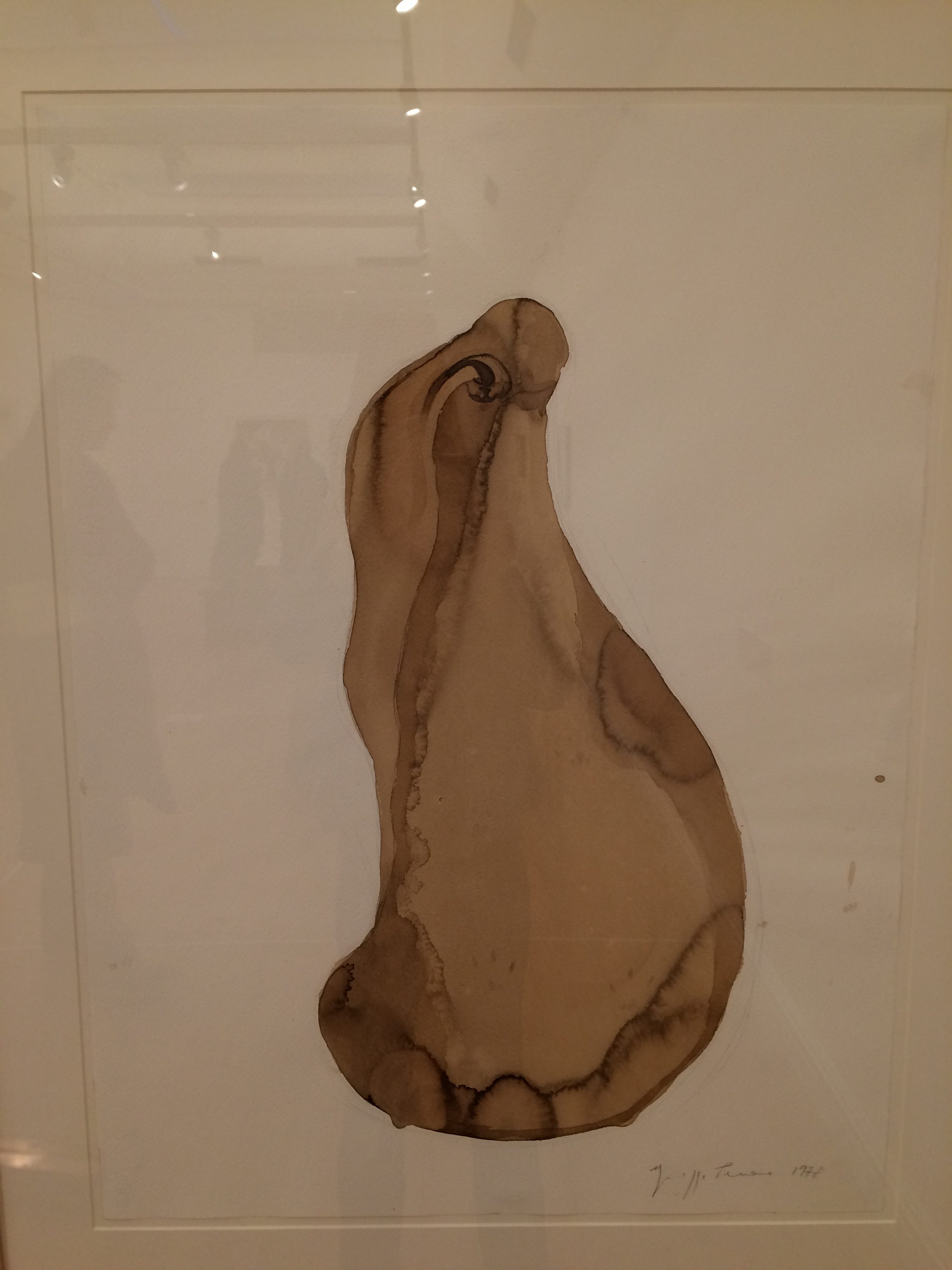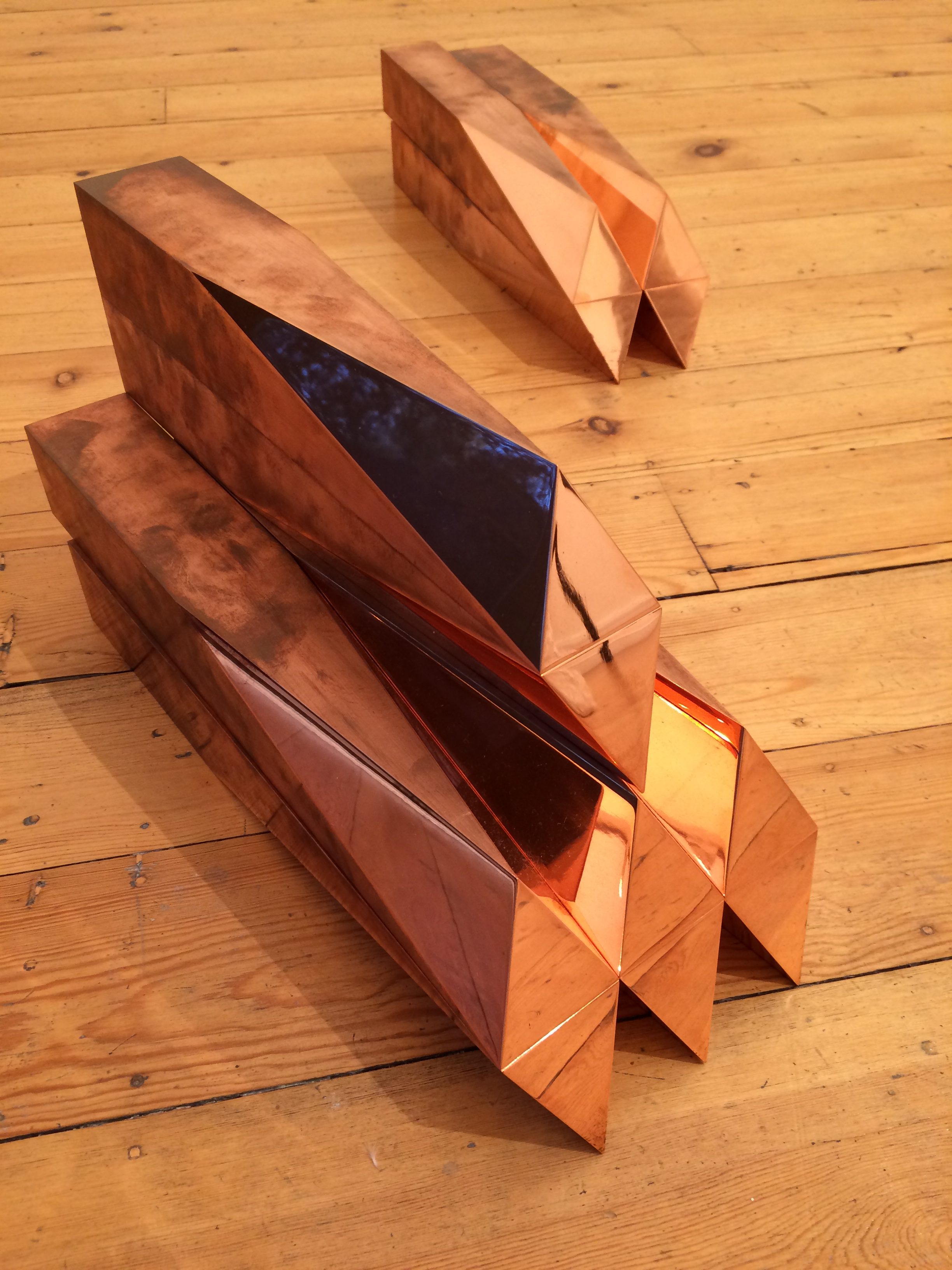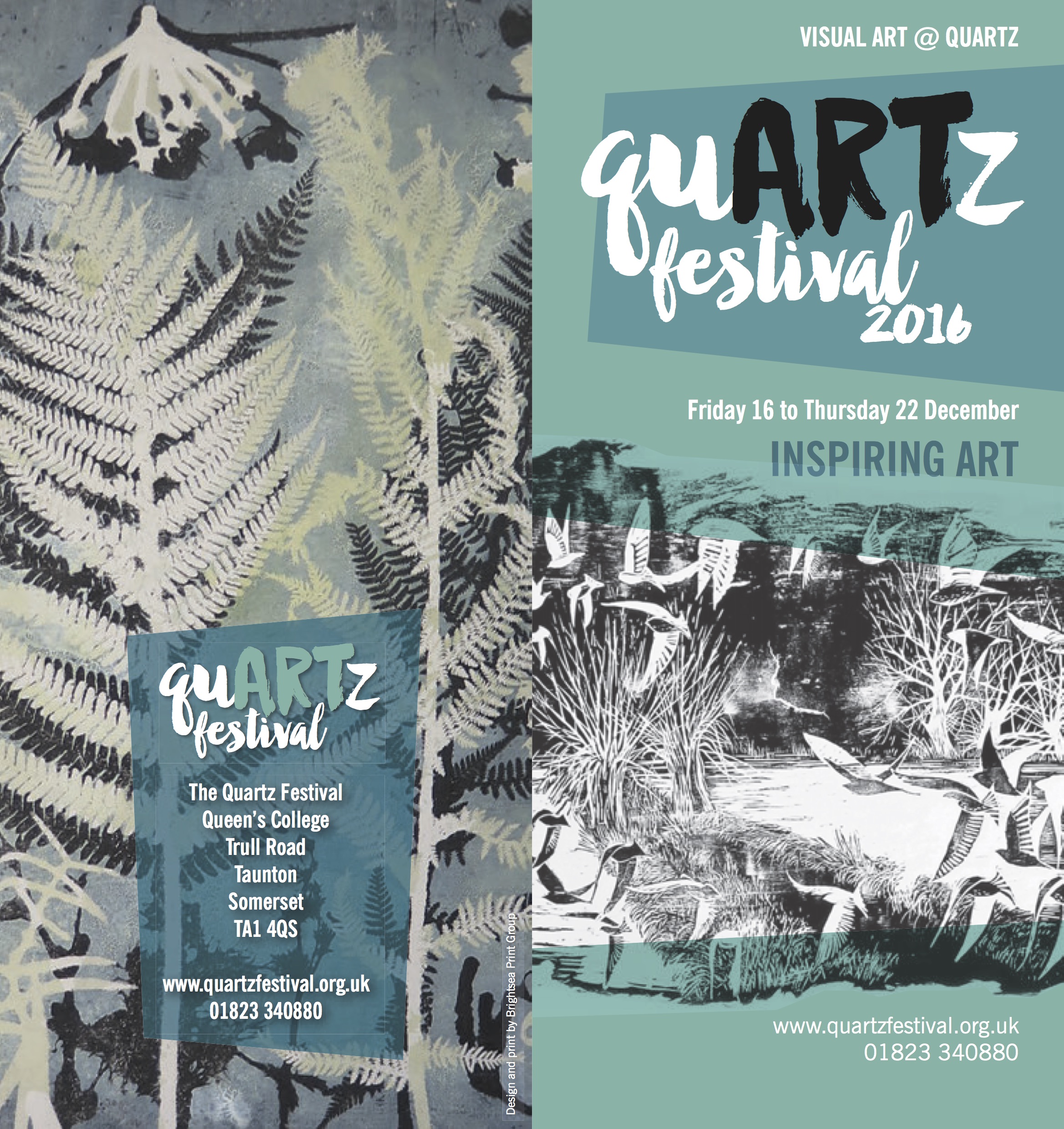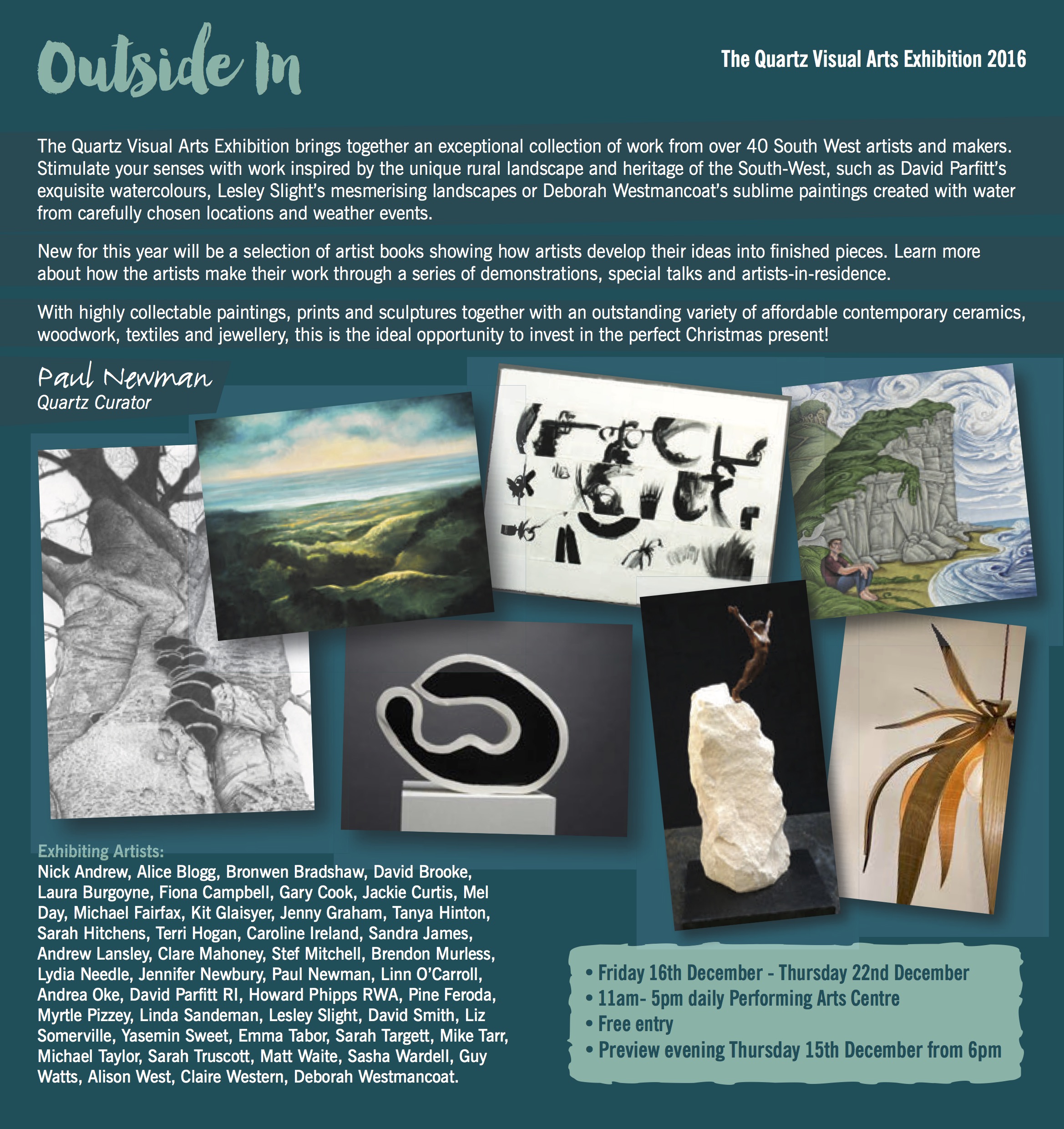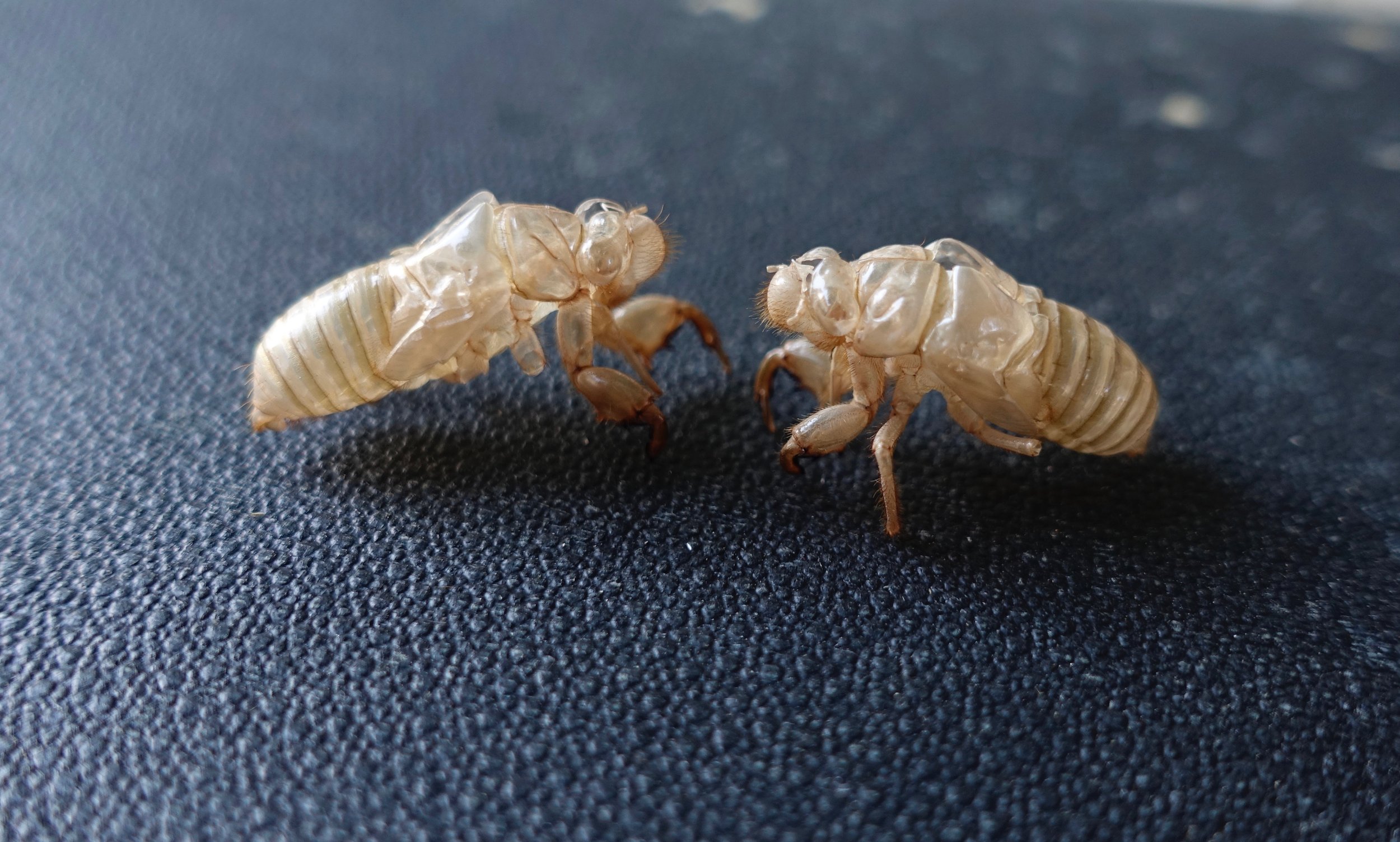 I was delighted to have been selected for the Ingruttati Palermo workshop and exhibition, a collateral 5x5x5 event organised by Hydrocity as part of Manifesta12, the European nomadic arts biennale. Manifesta12 acts as form of ‘urban acupuncture, providing interventions in key city spaces’. I was kindly supported by Bath Spa University’s Enterprise Showcase Fund.
I was delighted to have been selected for the Ingruttati Palermo workshop and exhibition, a collateral 5x5x5 event organised by Hydrocity as part of Manifesta12, the European nomadic arts biennale. Manifesta12 acts as form of ‘urban acupuncture, providing interventions in key city spaces’. I was kindly supported by Bath Spa University’s Enterprise Showcase Fund.
The aim of our workshop, involving experts and international students in art, architecture and geology, was to work collaboratively, researching the underground qanat (aquaduct) network at territorial and local scales to produce a collective installation and publication. The Manifesta12 theme ‘The Planetary Garden’, a vision where citizens are responsible gardeners caring for their environment, was at the heart of our work. I was interested in developing the aspect of my practice involving collaborative art projects in the community on an international level.
Palermo’s historical significance (‘gateway between East and West’ leading to numerous invasions, mafia violence, renaissance) and its ancient qanat networks used for garden irrigation make it a fascinating, multicultural city.
DIARY
I made a diary, documenting my research and thought process (now exhibited in the Ingruttati Palermo exhibition):
19/7/18: Arrival in Palermo. I was struck by the melange of sights, sounds and smells; wonderful and ironic contrasts of dereliction next to grandeur, the mix of architecture, glimpses of Arabic domes through dark grubby alleys, exotic planting, washing hung out across streets, the heat and humidity. Visited a Manifesta exhibition (tribe ritual film by Yari Antonio in a dark chapel), the splendid Quattro Canti, skirted the seafront of La Cala, and rested in the wonderful gardens of Villa Giulia, surrounded by a cocophany of screeching cicadas.







20/7/18: Introduction at University of Palermo. Metfellow participants. A series of fascinating talks by specialists revealed the real and symbolic relevance of underground water networksto urban regenerationand community life. Sara Kamalvand (co-director) explained the qanats’ origins, how they help us understand the city’s archaeology, a potential provision of water in the future. ‘The line can become the figure: a reading device’; I imagined 3-d linear drawings. Pietro Todaro (geologist, Sicily’s qanat expert) charted the history of qanats, how they spread from Iran. The Conca d’Oro was cultivated with citrus fruits, now overbuilt. Through diagrams and maps he showed us various systems, explaining the physics: water communication, importance of slope and height for energy. Qanats intercept the water table by gravity and hydraulics. Danisinni farm has been irrigated by the same water for 1000 years. A narrative of washing and laundry is linked to the area. Fra Mauro (Franciscan priest at Danisinni) described his long term project for Danisinni, an isolated, depressed rural area, his ‘dreams of garden, water flowing all around’. People didn’t know about Danisinni until recently. Through water, he sees new life, a transformed community. Fra Mauro’s goals are for art, beauty, engagement, food, peaceful relationships with humans and animals. Danisinni is under threat of being turned into a carpark.He believes this workshop might be important in spreading the word.
Visit to Manifesta12 Research Studios to see the Augmented Palermo Exhibition - beautifully executed projects by local and international architecture students, led by the Dean of Architecture, Maurizio Carta. Alively archive of city, imagined and real, past, present and future, inspired by the planetary garden and OMA Atlas. Renzo Lecardane gave us an animated explanation about his students’ projects. I particularly enjoyed the projects that included an element of play.


21/7/18: Day visiting Manifesta12 events. Bought the OMA Atlas - a reference gem on Palermo, covering its history, politics, urbanisation; a ‘tool of mediation between the city and Manifesta’. I loved Chiesa Santa Maria della Spasimo, a stone church bombed in WW2. A tall tree grows up through the internal structure of the inner courtyard to the open sky. The roof was never built – one of many unfinished buildings. In the rear garden, ‘Cooking Sections’ is an open-top brick wall installation, which revisits the Jardinu Pantesco: an ancient open-top dry-stone tower invented as a single-tree citrus garden. ‘Like the church ruins, lacking a roof enables a microclimate through a passive cooling effect... instead of traditional drystone walls it uses... alveolar blocks to allow air flow.’ Following this concept, in the Giardino dei Giusti vast swathes of yellow netting surround and shade citrus trees, echoing the draping laundry above. Trees recur as a symbol. At Orto Botanica (such diversity of exotic plants) the extravagant aerial roots of ficus trees struck me. A limestone corridor depicts photographs of ancient fossilised plant forms unearthed from coal-mining sites (Michael Wang, ‘Carboniferous’, 2018). They highlight the contrast of inorganic modern materials originally created by organic swampy forests. The patterns imitate trees and ferns still growing in the garden.







In Palazzo Butera’s ‘Wishing Trees’, 2018, stories of 3 trees connect human histories and nature: ‘..through contemporary stories of conflict, migration and feminist anti-mafia activism, the roots of these trees reach into the present’. Films are used to retell the stories. Pipes also recur. Rayyane Tabet’s ‘Steel Rings’, (2013–ongoing) depicted rolled, engraved steel pipe rings replicating segments of the original Trans Arabian oil pipeline that crosses 5 borders from Saudi Arabia to Lebanon. I am fascinated by the remnants of ancient clay pipes embedded in the old citywalls. These once provided drinking water to residents. With reference to the garbage strewed around Palermo, and its history, collections of objects are explored in Khalil Rabah’s ‘Relocation, Among Other Things’, 2018, ‘an archaelogical site of contemporaneity, ...the trivial... a research into ...Palermo’s poorest material culture’. Stacks of stuff including utensils, bed frames and cables fill the room, while museum vitrines sit empty. In another exhibition near Quattro Canti, collected objects are displayed for their value or significance to site. Banners, too, are a strong theme in exhibitions, alongside processions, highlighting use of craft, text, campaign, activism.


Numerous exhibitions are set in the faded elegance of old churches and palaces, providing a rich contrast to contemporary artworks. After the group dispersed, I made a beeline for Chiesa di Santa Venera to see work by an artist I’ve been studying: Berlinde de Bruyckere. Hidden away, the church has been restored after a century of abandonment, like many buildings in Palermo. In the cool interior, after the blazing heat, I was offered a chair to peacefully view Mantel I and II - a homage to Francis of Assisi, referencing Christian symbolism and the core of human existence. Layers of wax built up on torn blankets that form a crucifix pose, with open scars as wounds on a slashed wooden backdrop. In her work, blankets once represented the genocide in Rwanda. In Mantel I and II, they are deteriorated, worn thin, referring to the habit of San Francesco. I was given a sample of her work to feel, such a privilege! It seemed serendipitous that her work references the Fransiscan order, and our local focus was Danisinni, run by a Franciscan priest.

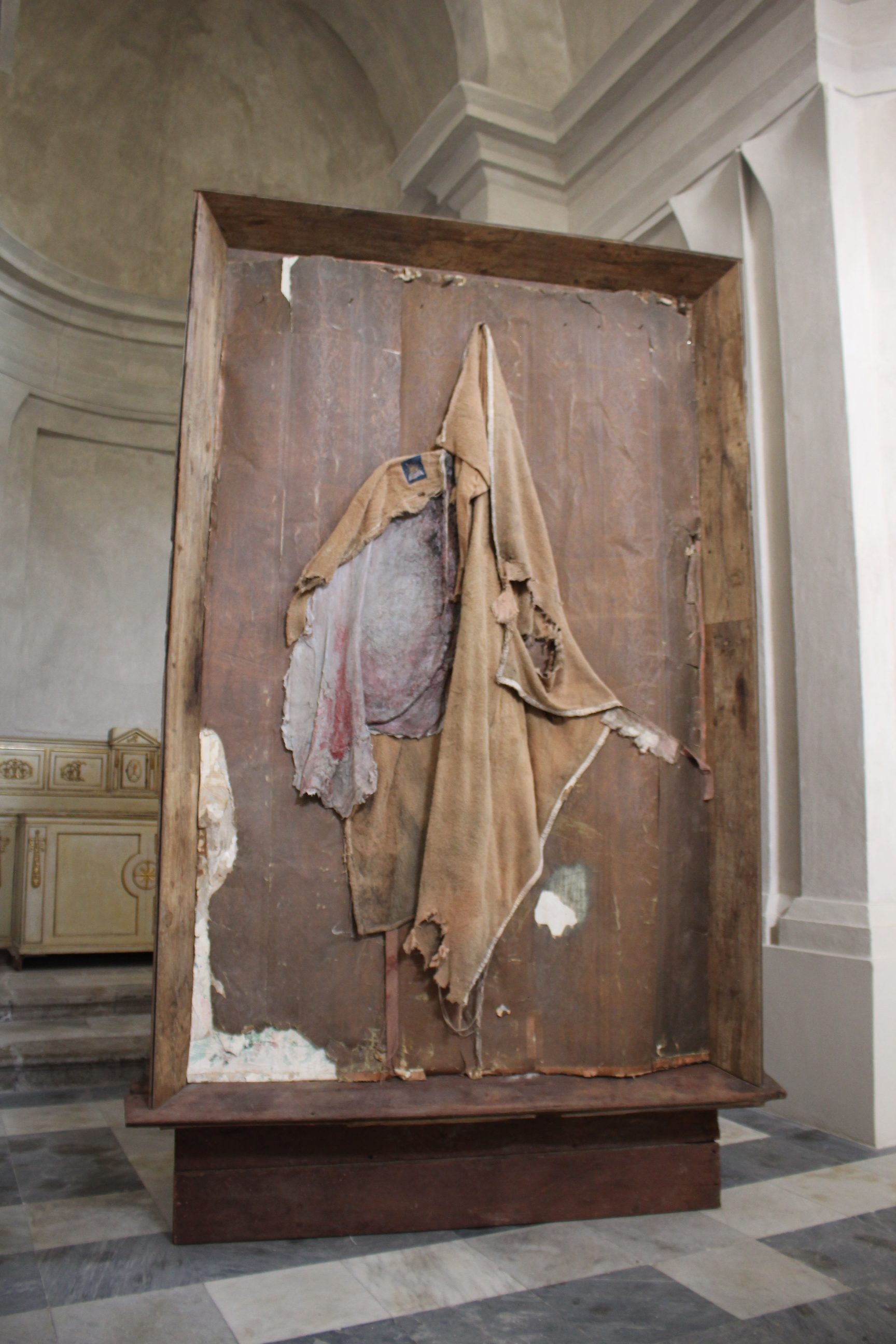

In the evening we introduced ourselves and discussed our thoughts for the project. I’ve been thinking about: vertical/horizontal; communication through sounds; collaboration/public participation; qanat as mycelium, part of nature; Franciscan community; scars; garbage, which reflects an attitude of waste.
22/7/18: Visit to Danisinni, our local case study, where a wonderful social projectlinking water source,community and sustainable farm has developed under the wing of Fra Mauro, bringing everyone together. Here, time slows down. Situated just beyond the old city gate, a turning downfrom the busy main road leads you into a basin, where you immediately feel calmer, as though time has done a u-turn. Local expert Enzo Patti and Pietro Todaro showed us 3 water sources demarcating the journey of water. 2 (now dried) rivers surrounded Palermo - likened to 2 brothers with opposite characters - one fast, prone to flooding, 1 slow, associated with disease and pestilence. Both gave life and benefits, but also had their dangers. Danisinni was built in a swamp basin created by an ancientquarry. The laundry industry developed there and as papyrus grew, so did their paper industry.









We discussed keywords: water, life, production, human, urban. Also: narrative/message, poetry, layers, investigation, metaphor/symbolism, washing/laundry, sounds, trees/roots, lines, networks, pipes, flow, fracture, archive, communication, walking.
Visited bell tower and caves of Beati Paoli - grim!

In the evening, co-director Paulo Cascone (Co Design Lab) gave a talk about his sustainable design projects. In Mali, a building made of adobe became part of the landscape. Each year the rain destroys it so the people get together and reconstruct it, in favour of a permanent building - the community gathering is important to them. Fabrizio Vatieri showed his archive cabinet idea for our fabrication. He suggested we give each other tasks to open up the collective dialogue. My thoughts: water is the source of life; soil is also a critical resource. Clay could be dug up from3 levels, systematically comparing them, linked to terracotta pipes. Possibly combine with paper (papyrus). The blockage of the qanat is a metaphor for the severage of links with the natural world. The precariousness of Danisinni reminds me of a book I’ve read ‘Planet of Slums’, by Mike Davis.
We sensed that some residents, understandably, are resentful of us. A bottle of water was thrown at us as we left Danisinni by a lad on a bike. This later became a prompt for my final idea.
23/7/18: Fieldwork/research trip to the Timpone di Sirocco mountains and Gabriele qanat in a convoy of cars to see water sources that flow from the mountains. Fabulous views across Palermo, nestling between mountains and Conca d’Oro (now mostly covered by poorly planned concrete urban expansion) and the sea. It was awesome to climb inside the Gabriele underground cavern and see pure water bubbling up from the ground. Outside the Gabriele water source are examples of different widths of terracotta pipes used inmedieval households. At the water plant, pipes and papyrus seem an interesting poetic contrast. Water is extracted from an electric pump. I collected specimens of rock, silt (from qanat), an abandoned nest made from papyrus, a plastic pipe. Mapping with found objects linked to site. Are all my collected objects about decay? Trying to retain the concept of collaborative work but the project seems to be veering towards individual projects. Visited the Capuccino Catacombs, where I had time to sit and draw.







24/7/18: Love the free bus, saves my aching feet. Group session indexing with keywords to devise categories. My words: linear networks, roots, cycle, pipes, community. After discussion, I went in search of a vessel on wheels for my work. I was hoping to use found and recycled objects. I found a man who offered me his home-made wooden trolley for 10 euros! Found string and wire to pull the trolley and some trashed old books, one with incredible human anatomical illustrations, the topological layers of veins and organs reminded me of qanat networks. Did a rubbing on the pavement of an amazing crack (it looked like Palermo set between the 2 old rivers). Final idea: to pull my trolley around Danisinni neighbourhood, collecting discarded plastic water bottles. Then fill them up at top water source (filmed), take them (in a crate) to residents (communication network) and offer to them for watering their plants/gardens (aka Planetary Garden). Also, make collection of objects from significant sites. We visited an exhibition High Series & Walls and Experimental Jetset at Ore 18 Gallery space. A thoughtfully conceived presentation of the art of typeface alongside prints and photographs.

25/7/18: Some visited the Scribene qanat and Sirocco room, while a few of us remained at Danisinni to work on our project. Renzo suggested we look at the church crypt as a possible venue for our exhibition. It’s perfect - a beautiful, atmospheric space, with a highly relevant backstory. Clay relics and mosaics are displayed, and human skeletons found in the ground are kept in a carefully dug out cavity under the centre of the crypt floor. You can look down onto them through a glass window! Legend has it that a young girl fell into the swamp. The whole community prayed in anguish to the holy family for her life. As she was resurrected from the water, a pillar was erected at that exact place to honour the miracle. Life revealed through water. I performed the first half of my ‘Gift of Water’ piece, with Nick filming. Deadlines are upon us and a panic has taken hold.
Ended up in the depths of the Gesuitico di Casa Micciulla qanat, out of the city, with Karolina, Pierangelo, Renzo, Lucas, Lisa Wade from Manifesta and others. Clad in wellies, waterproof jackets, trousers and helmet with head torch we descended a vertical shaft ladder about 15ms into a horizontal qanat. Water was calf height, the sound of pouring water overpowering. Wonderful limestone/sandstone formations. Some sandstone blocks carved to fit together as arches. Built around 16thC. Amazing to walk through underground watertunnelsmade by man. Imagining the people who spent endless hours, days, weeks, months, years in the dark digging these out. How did they navigate in the dark underground, how did they know which way to go and dig such a gently ever-decreasing slope down? Families passed on skills/knowledge generation to generation. We walked for a long time through narrow, winding tunnels, water dripping, gigantic mosquitos, shell fossils and clay. Saw vertical wells, rectangular (for water wheel) and circular (for collecting debris). Climbed down into a lower well, water level up to knees/thighs, got very wet! Terracotta pipes carry water and there’s an upper level. Evidence of digging marks on the ceiling. Thanks to Renzo Lecardane for the car lifts. Finished 9.45pm - long day!




26/7/18: Met at 9am to finish performing/filming my piece 'A Gift of Water' (see stills below). Enrica (translator) and Nick (filming) collaborated with me. We explained the concept and offered them a bottle of water for their plants. Loved the way they engaged, played along, appreciating the manner in which it was intended. Enrica’s charming manner really helped. It was a success, we gave away most of the bottles and managed to reach different demographics in age and gender, some at work, some at home. Karolina did a great job patiently editing the film. Difficult as it was taken in both landscape and portrait format. Late dinner in city. Looking forward to the Opening!







I was pleased with the film, apart from the poor sound quality (should have used mic). The homemade style adds to its charm as a spontaneous social gesture.
27/7/18: The exhibition came together after some hairy moments when we realised we had no working TV or cables for the project. Nick Weaver (friend) helped with sanding, sawing and signage. I used part of a reclaimed trashed wood bed for my shelf of found objects and diary, sanded and fitted into one of the crypt enclaves matching the other exhibits.




Other works by fellow participants include a video of water, stamps and banner, conceptual and underworld mapping, library of waters, curtain of video stills, booklet, study of commons, playful study of cracks. Together, these balance research with strong creative concepts.





7.30pm: ‘Ingruttati Palermo’ opened in the Crypt of Chiesa Parrocchiale SantaAgnese, Piazza Danisinni, 90134 Palermo, Sicily with a feast from the biblical garden (thanks to the Danisinni community) and a full red moon. It was a wonderful evening celebrating our intensive workshop,a good reception to our show, a huge success after some wobbly moments in the week. My film made people smile.




The show runs throughout Manifesta12, 27 July - 4 November 2018
28/7/18 Morning off to explore Palermo. Visited Ballaro market, Palatino Chapel, Palazzo Reale and Royal Gardens. The chapel is awesome, never seen anything like it. An overwhelming palette of glistening gold Byzantine mosaics fill the flamboyant space depicting biblical stories, fused with an immensely intricate Arabic carved ceiling. Floor and wall panels inlaid with marble and mosaic. Carved totem pillars. Exceptional example of the cultural synthesis between Norman, Byzantine and Islamic cultures.

Later we compiled documentation for our website, going live soon.
In the evening we visited a Manifesta12 collateral event Soundwalk Collective, an otherworldlyexperience consisting of overlaid echoing soundsfrom 8 speakers with UV light casting the church in a blue/purple glow, based on Ulysses. Recordings, slices of conversations, menacing voices, seemingly disembodied. Also came across an installation by Roberta Baraja outside Chiesa di Santa Catarina d’Alessandria, using fabric and wrapping to suggest fertility and abundance of plant life- right up my street!


29/7/18: After a clear up in Danisinni, we all went for a fancy lunch in central Palermo and then dispersed. Went up Chiesa di Santa Catarina d’Alessandria, amazing view of Palermo, domes, roofs, mountains, and drew. Best view of the city! Our final goodbyes were on the beach later that evening - the end of a shared adventure!

It’s been fantastic working with the other participants: Karolina Majewska, Enrica Consiglio, Pierangelo Scravaglieri, Andreas Mallouris, Mariana Mañon Sepulveda, Manolo Larrosa, Félix de Rosen, Elke Reinhuber, Lucas Bartholl, Deborah Westmancoat, Anne Arnbjerg, Dario Annolino, Chiara Buscemi, Sefy Calcaterra, Rosy Marino, Gabriele Lupo and Sara Kamalvand, director of HydroCity who initiated the project. Many thanks also to Pietro Todaro and Renzo Lecardane for their enthusiastic sharing of expert knowledge, the invaluable translations by fellow Italian students, the artistic input from Paulo Cascone and Fabrizio Vatieri, and support from Nick Weaver.
To produce an exhibition of new work in 10 days in a foreign city with strangers on a relatively unknown topic was an exciting challenge. The project was about so much more than an outcome. Working collectively alongside participants from across the globe and from different disciplines, broadened my experience, outlook and methodology. It was helpful to discuss ideas with experienced professionals in art and architecture. I gained an insight into alternative ways of viewing, researching, gathering, debating, mapping, sharing and displaying. We learnt from each other, a generous way of creating a collective intelligence.
My work took an unexpected turn. From my natural leaning towards 3d work, it became time-based and interactive. My interest in public participation and concerns over waste led me to explore the nature of gesture as a way to connect with local Danisinni residents. ’A Gift of Water’ is a performative piece, documented as a short film, using locally sourced recycled objects and water from the Danisinni source. It evolved into a collaboration between me, other participants and some of the Danisinni community.
Palermo is an enthralling city; I would love to return, even work there again!





 I was delighted to have been selected for the Ingruttati Palermo workshop and exhibition, a collateral 5x5x5 event organised by Hydrocity as part of Manifesta12, the European nomadic arts biennale. Manifesta12 acts as form of ‘urban acupuncture, providing interventions in key city spaces’. I was kindly supported by Bath Spa University’s Enterprise Showcase Fund.
I was delighted to have been selected for the Ingruttati Palermo workshop and exhibition, a collateral 5x5x5 event organised by Hydrocity as part of Manifesta12, the European nomadic arts biennale. Manifesta12 acts as form of ‘urban acupuncture, providing interventions in key city spaces’. I was kindly supported by Bath Spa University’s Enterprise Showcase Fund.


































































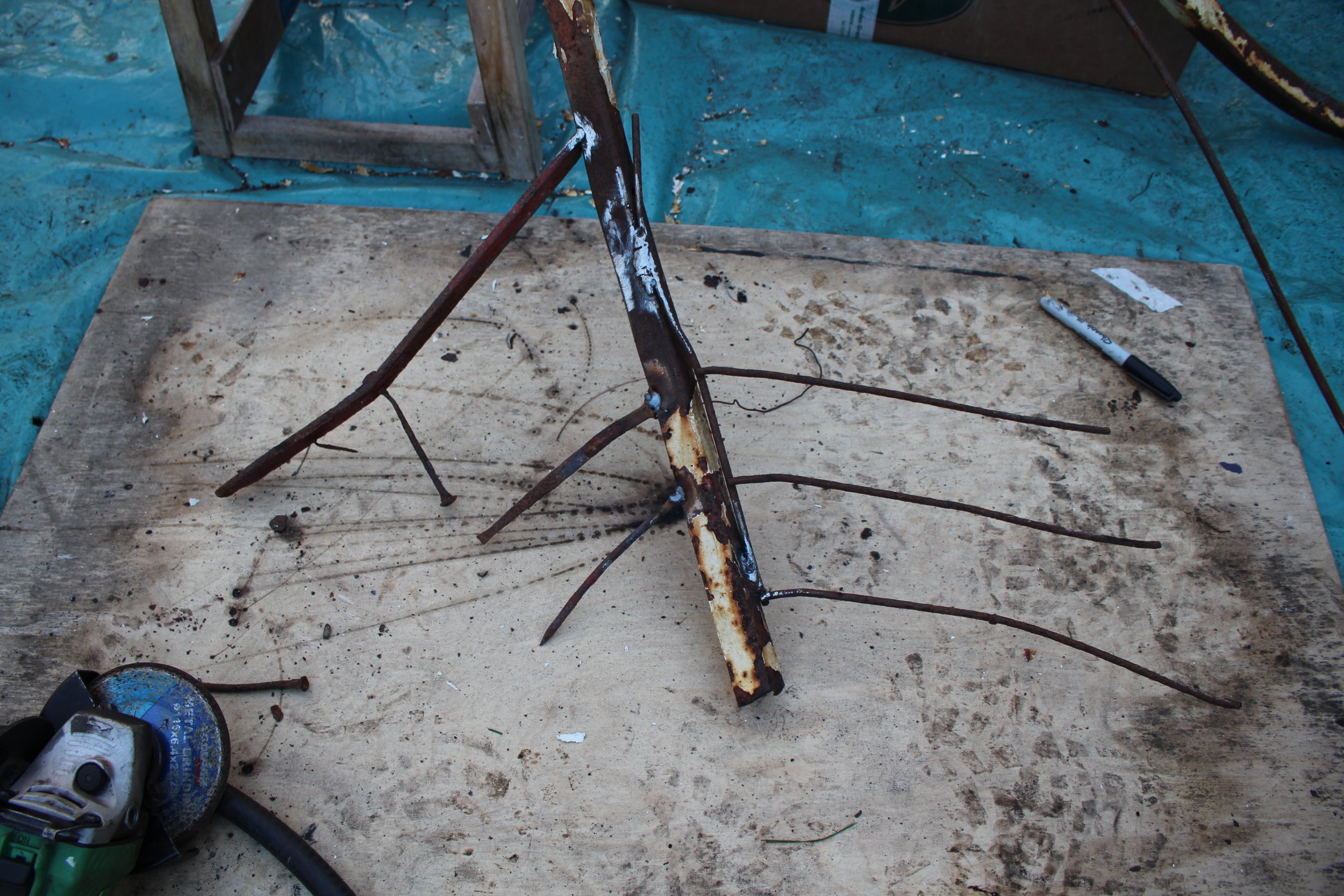
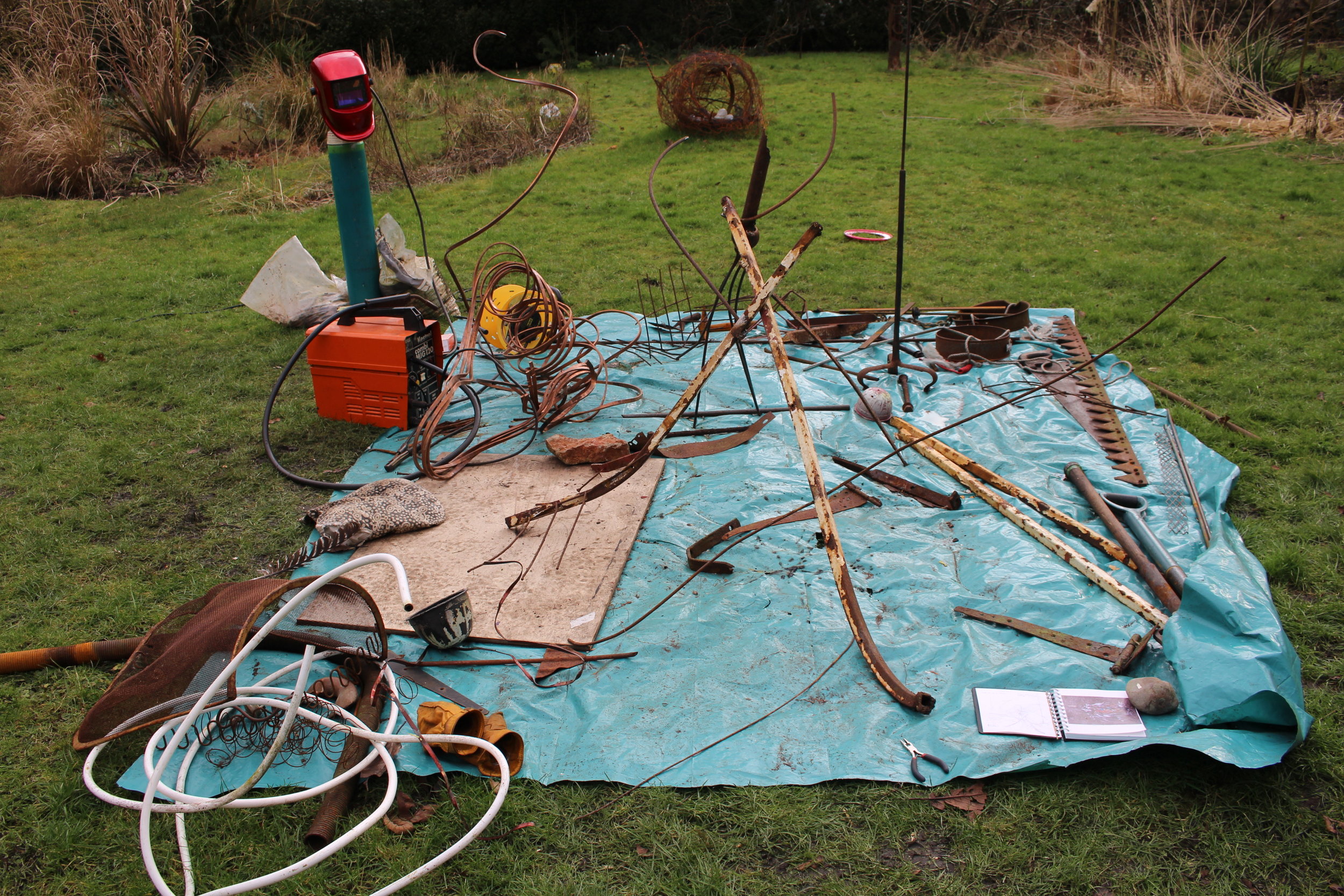
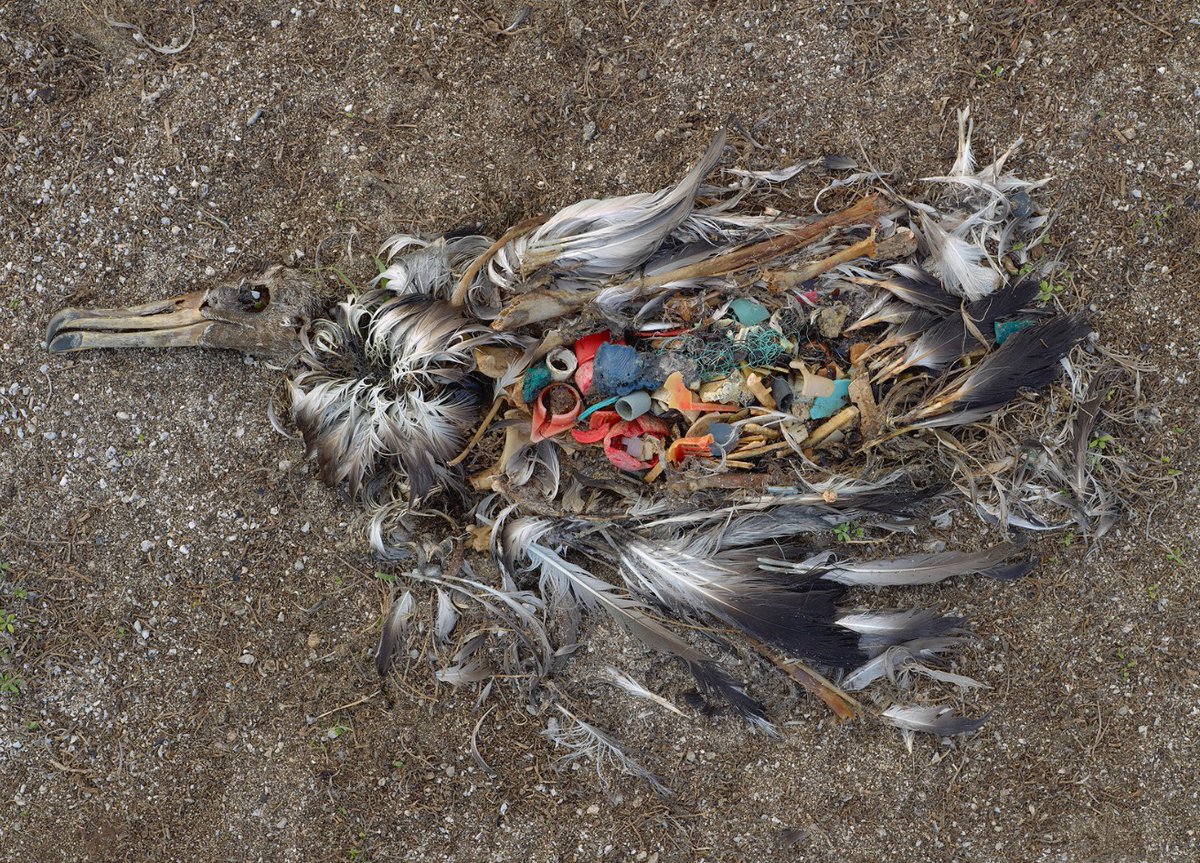
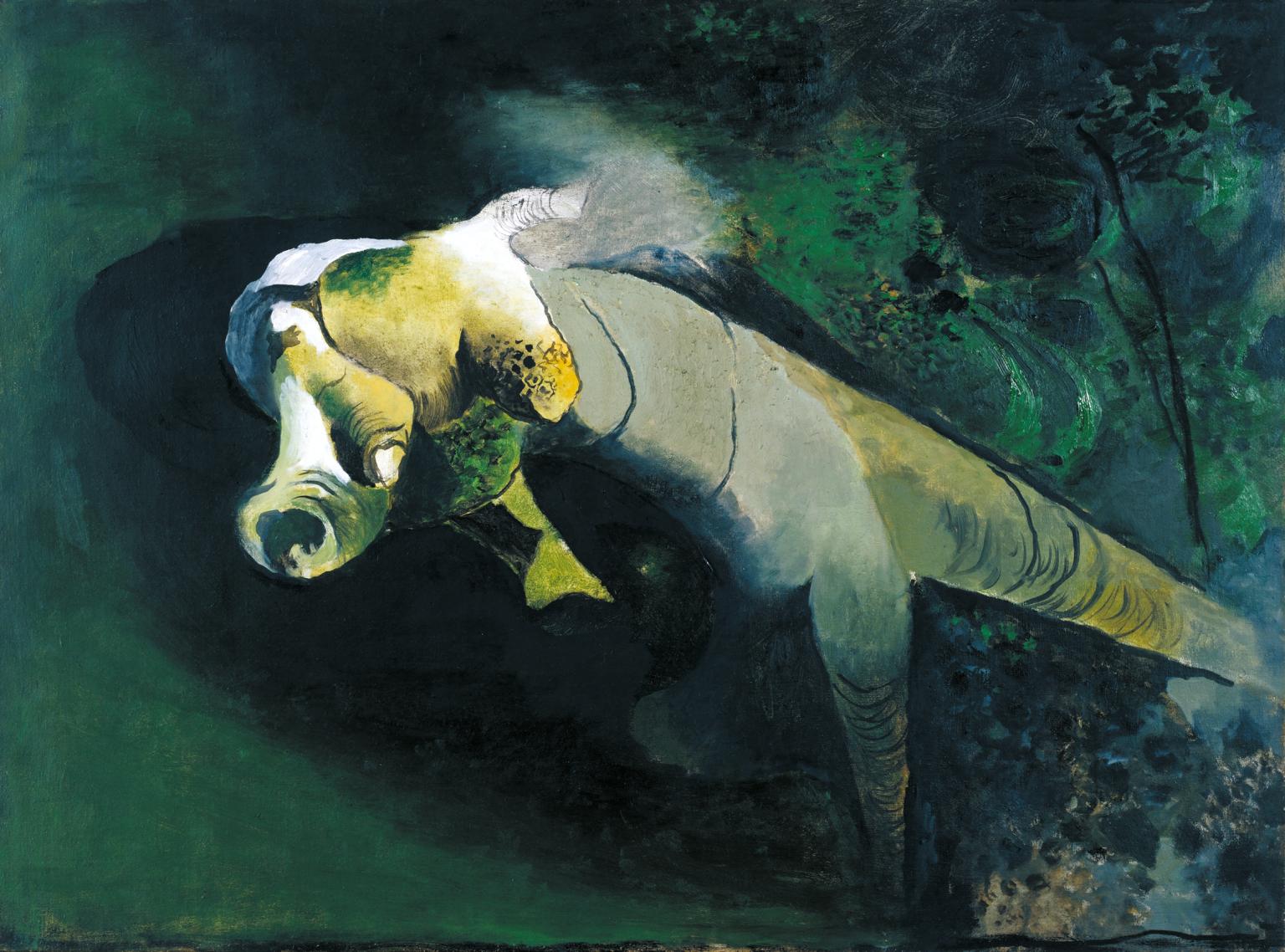
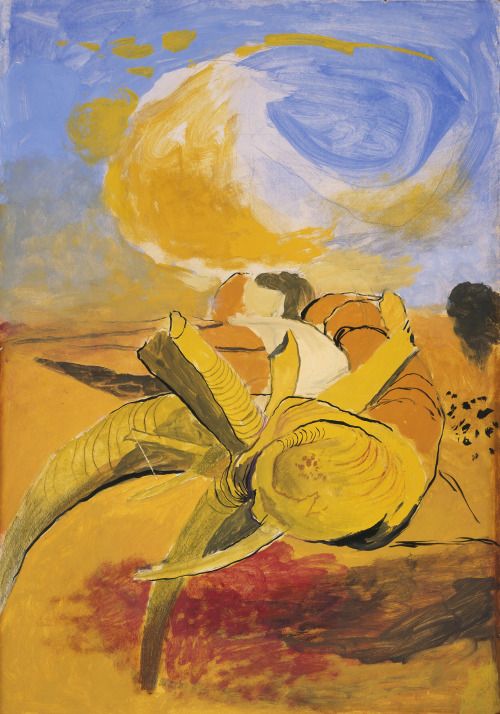
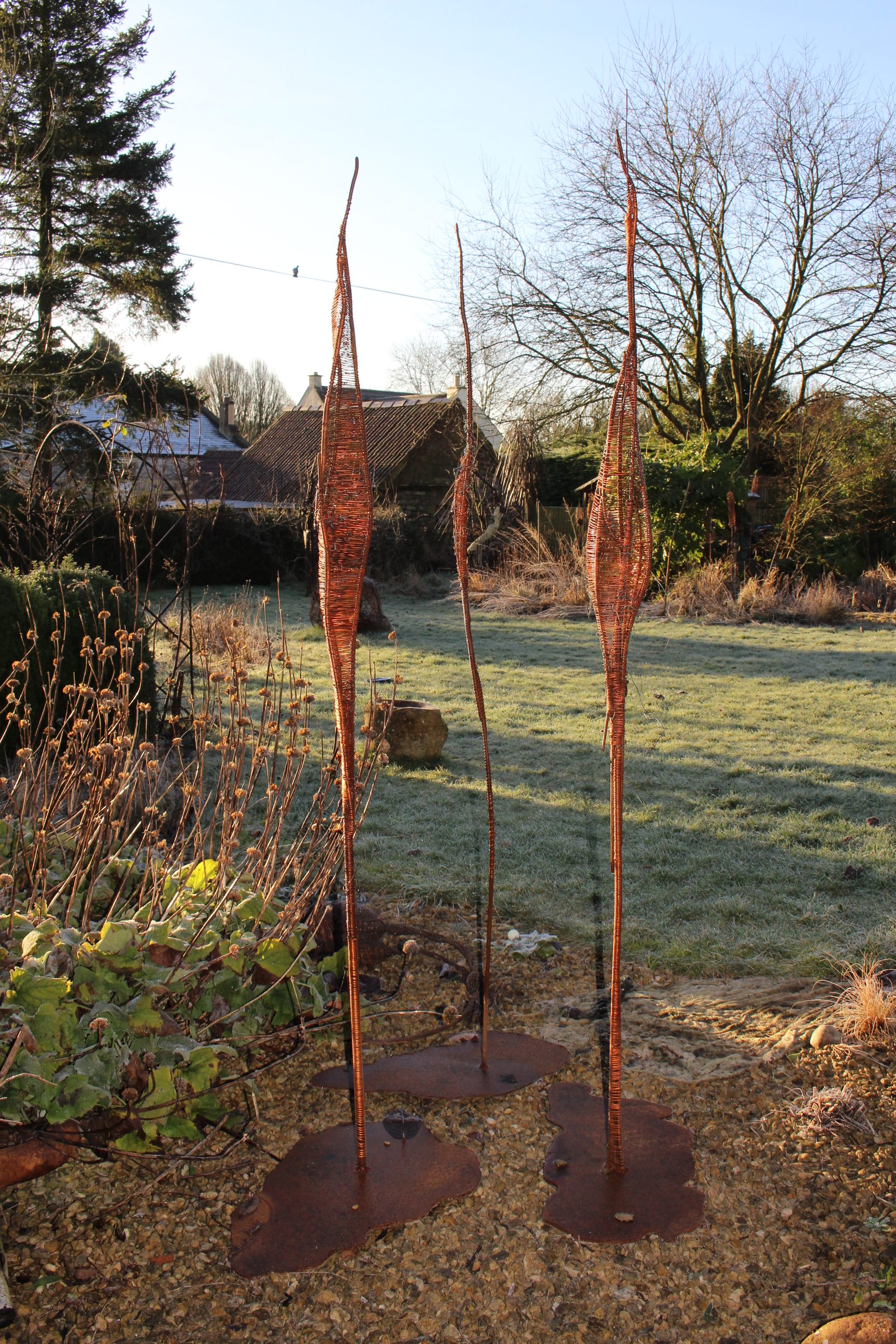
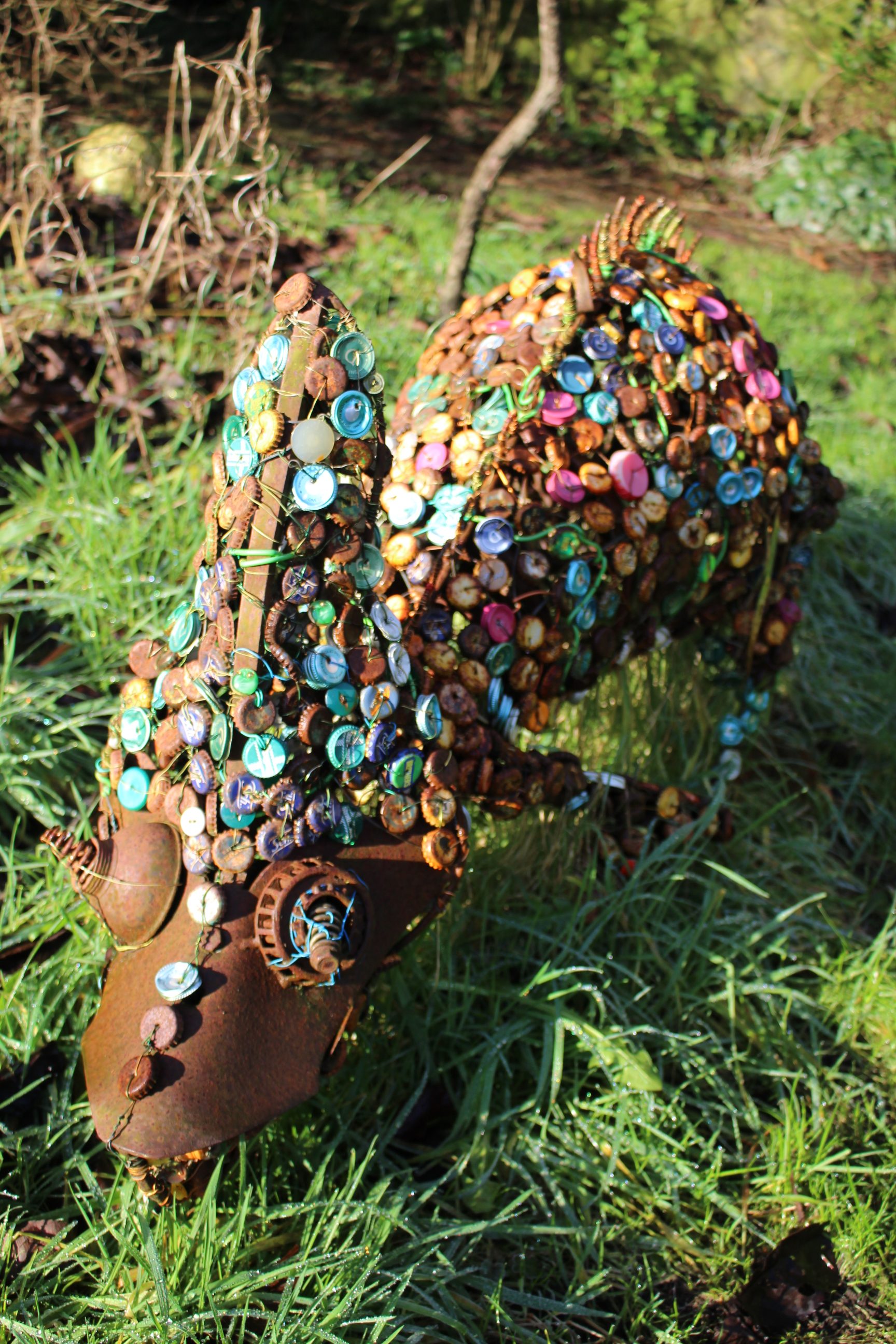
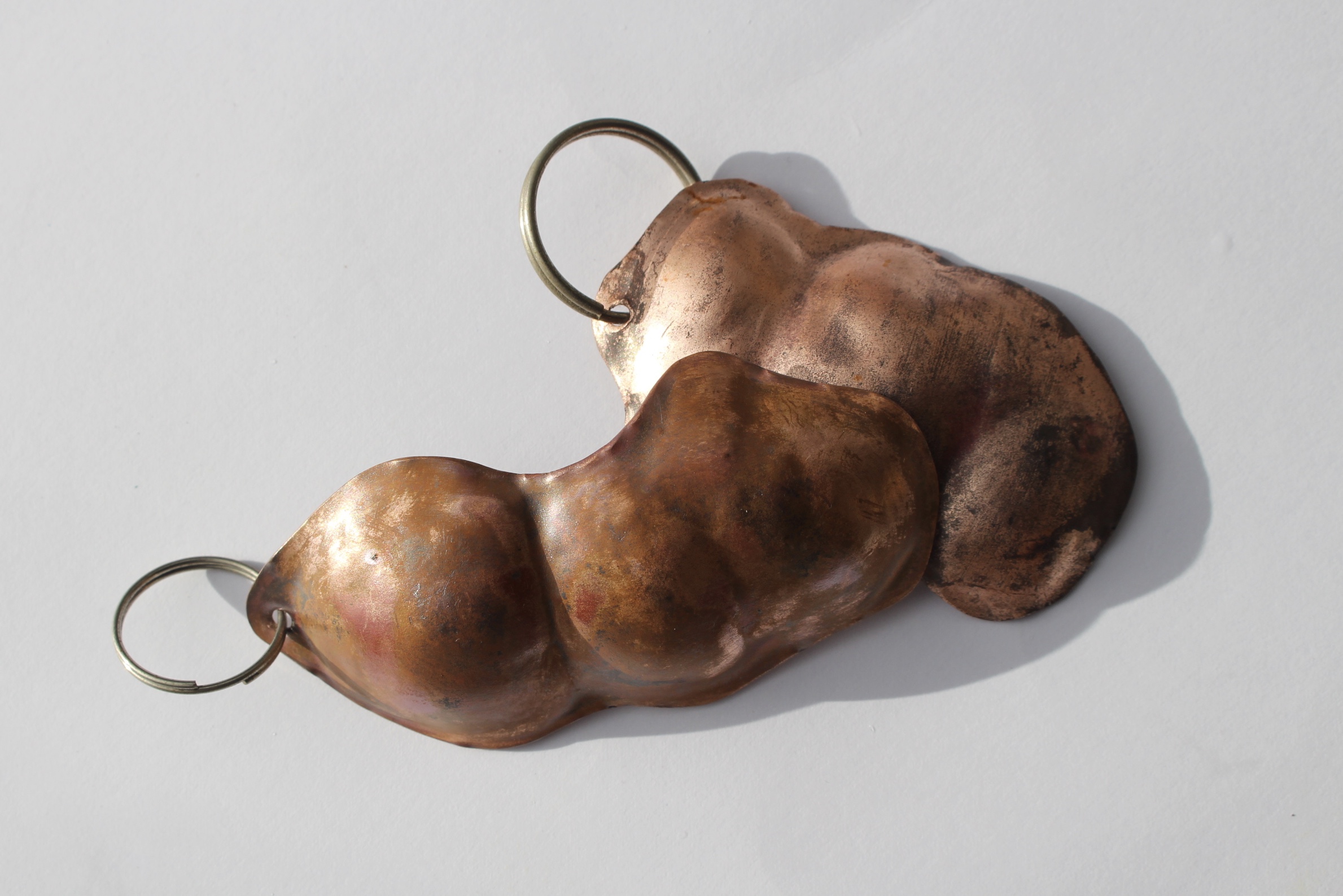
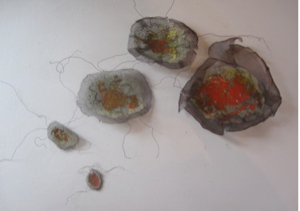
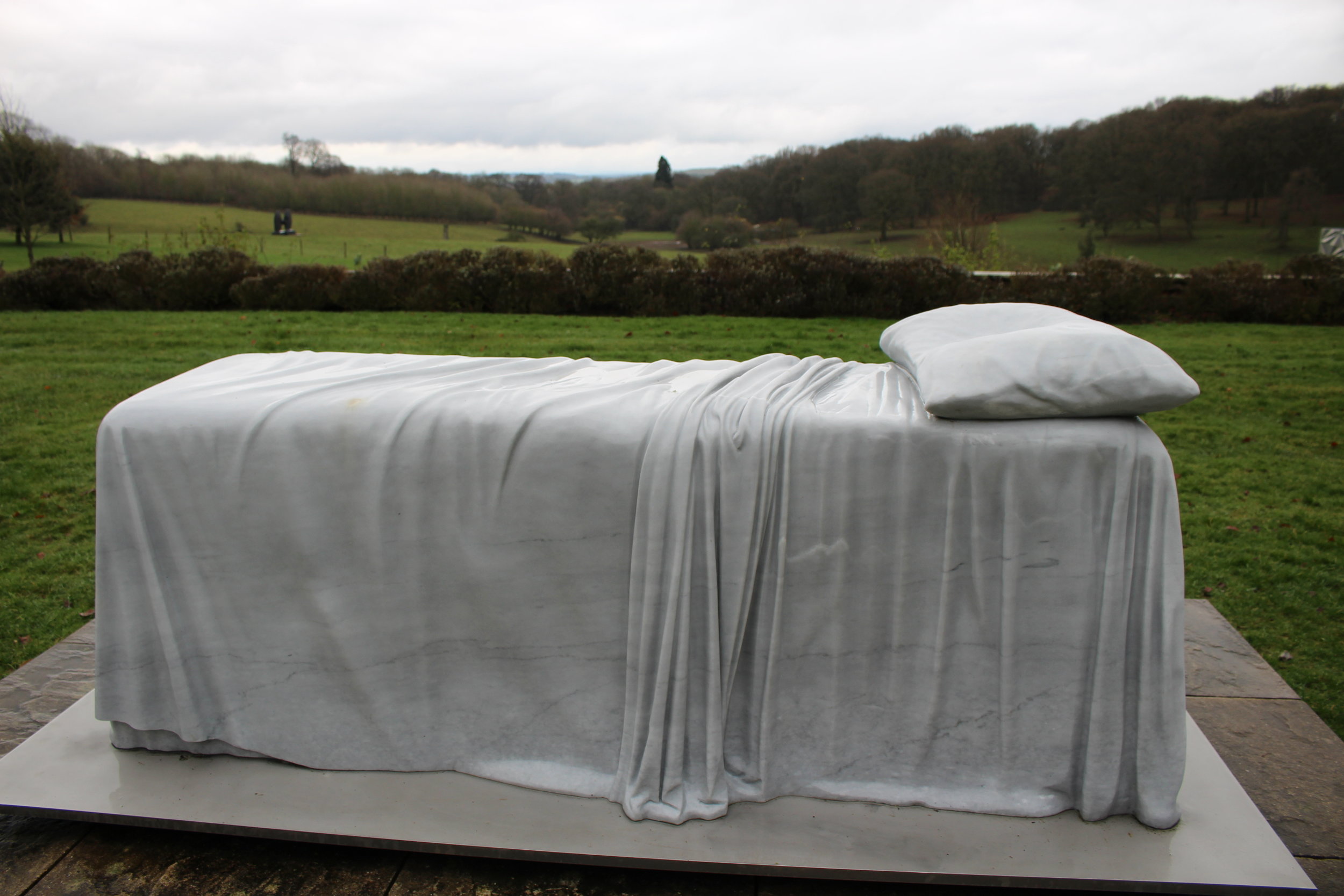
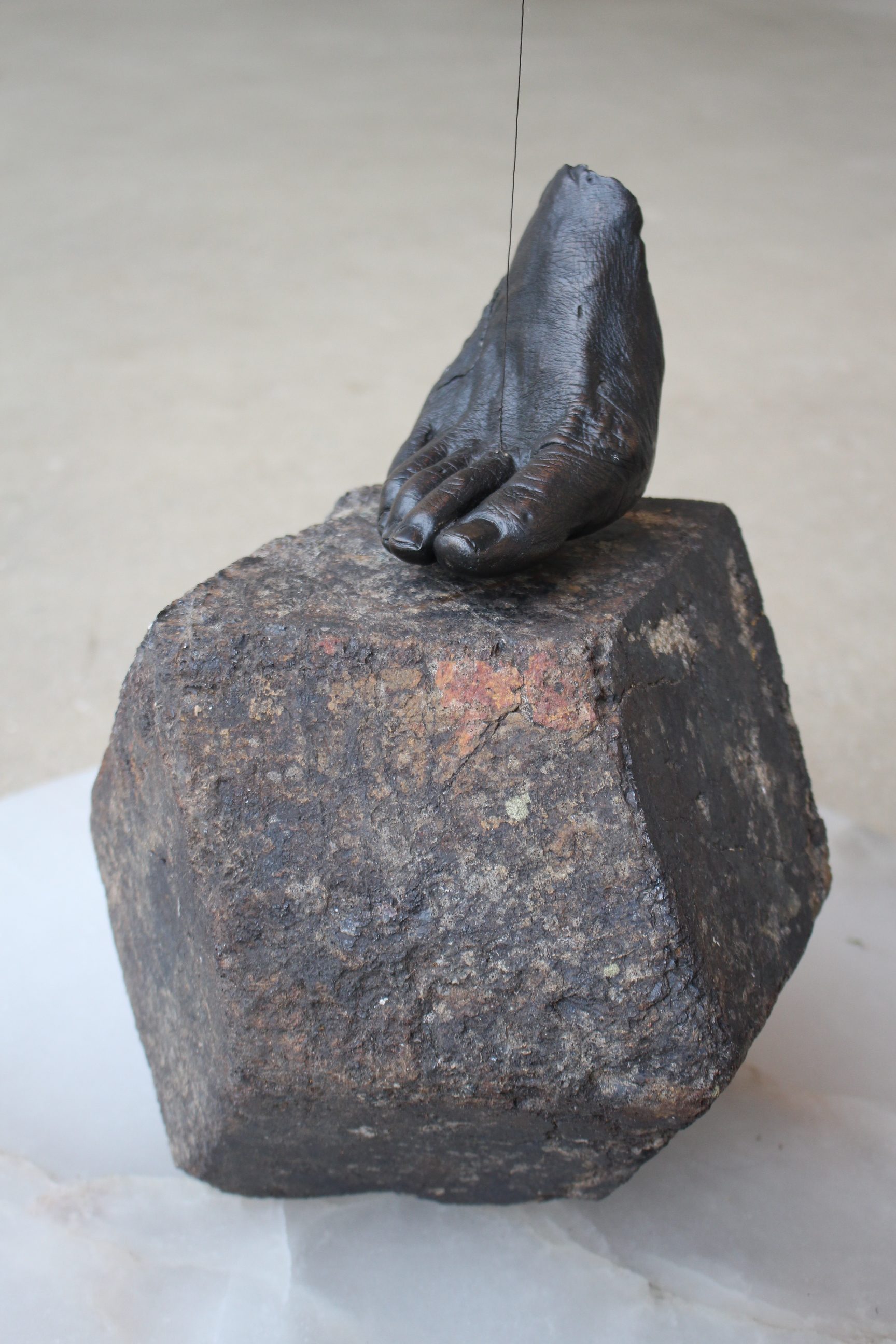
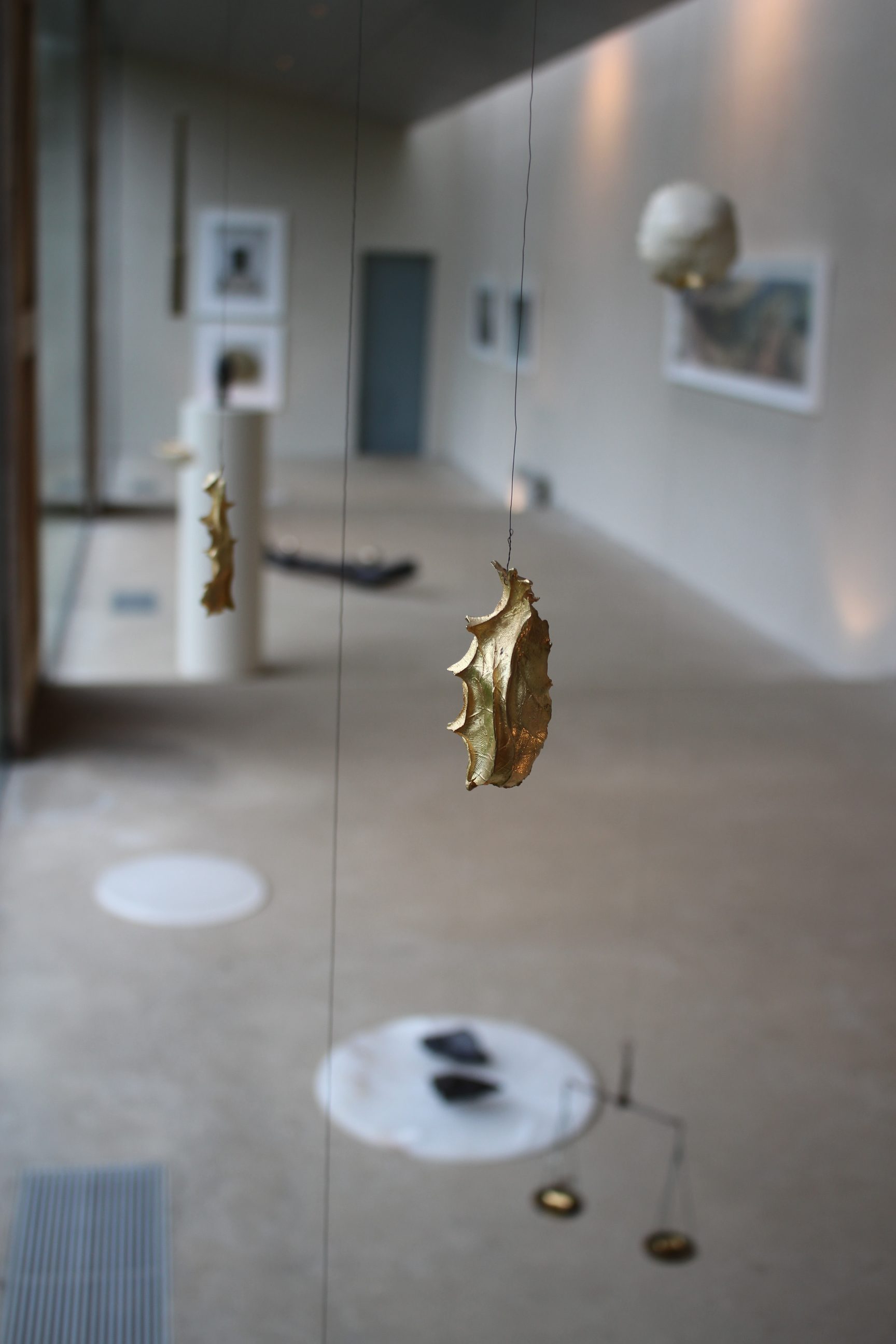

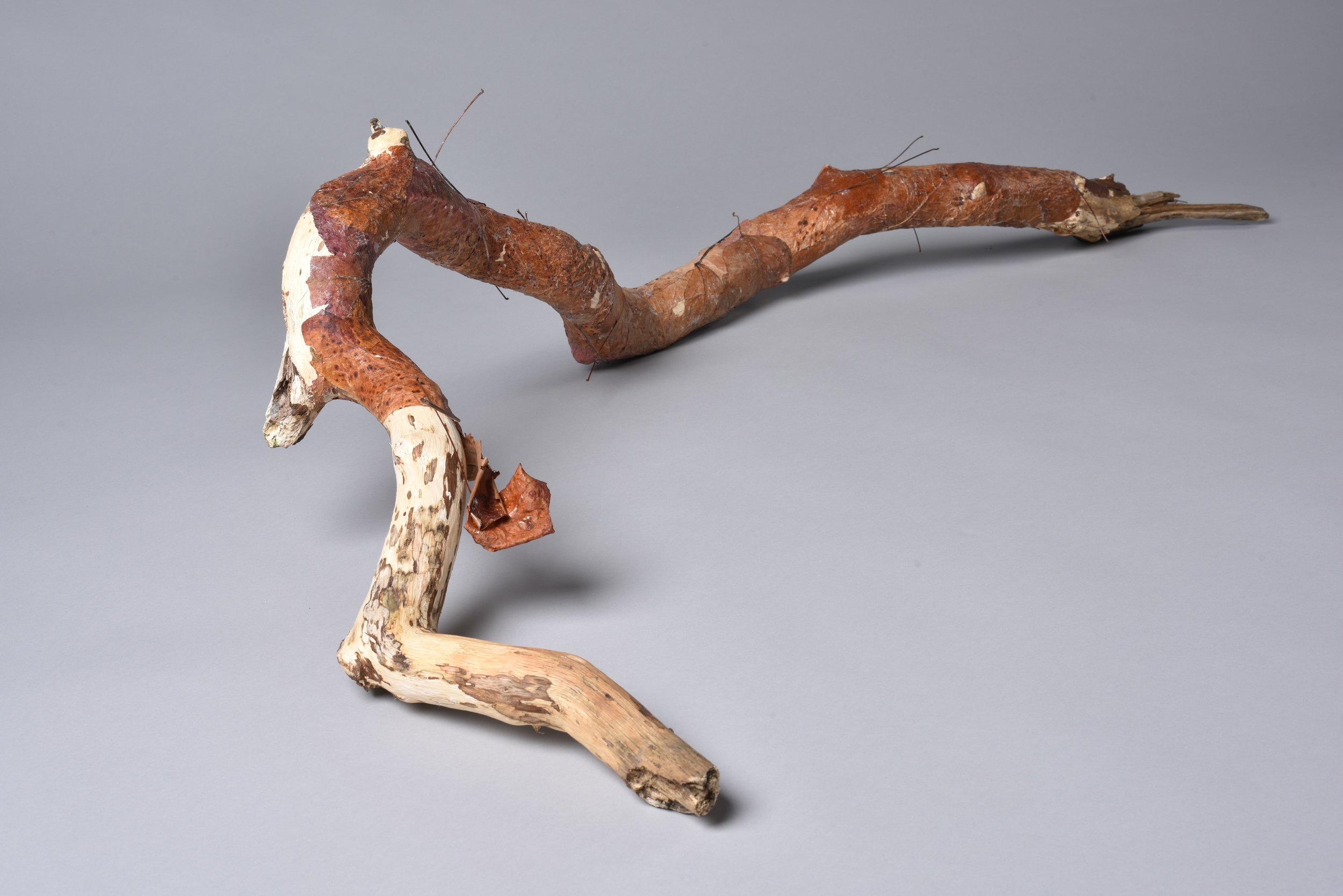 Hello to Winter and the festive season!
Hello to Winter and the festive season!












